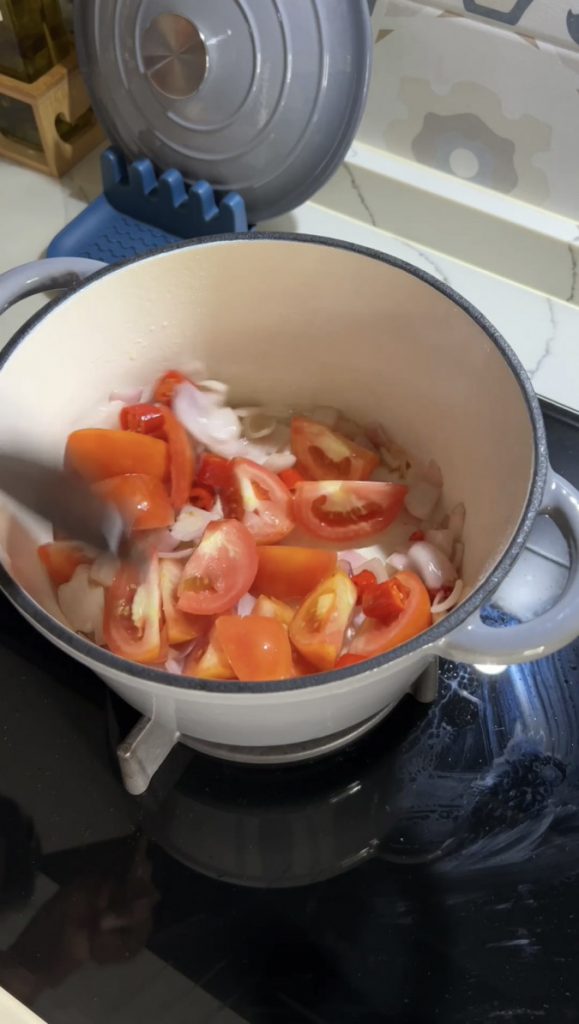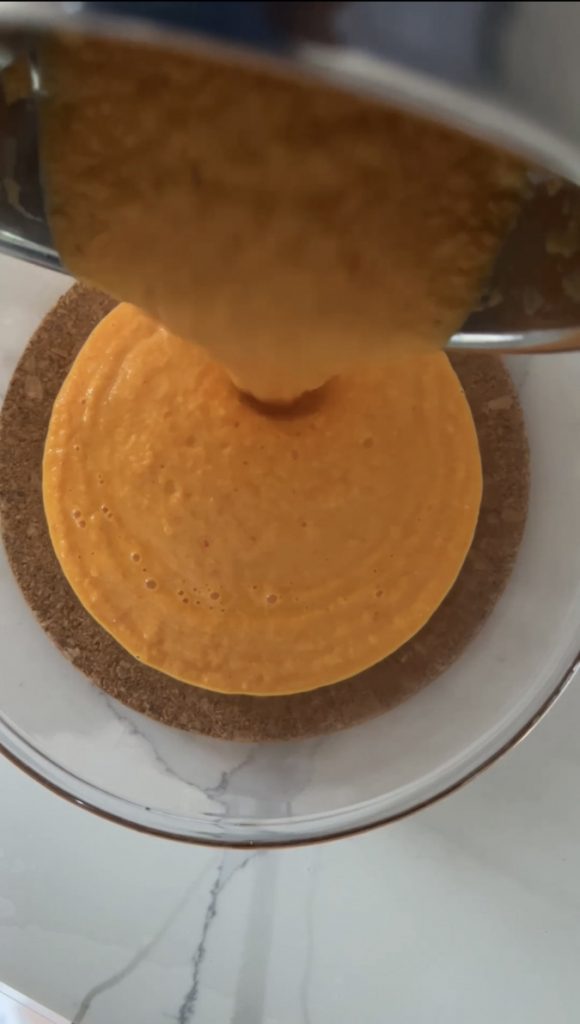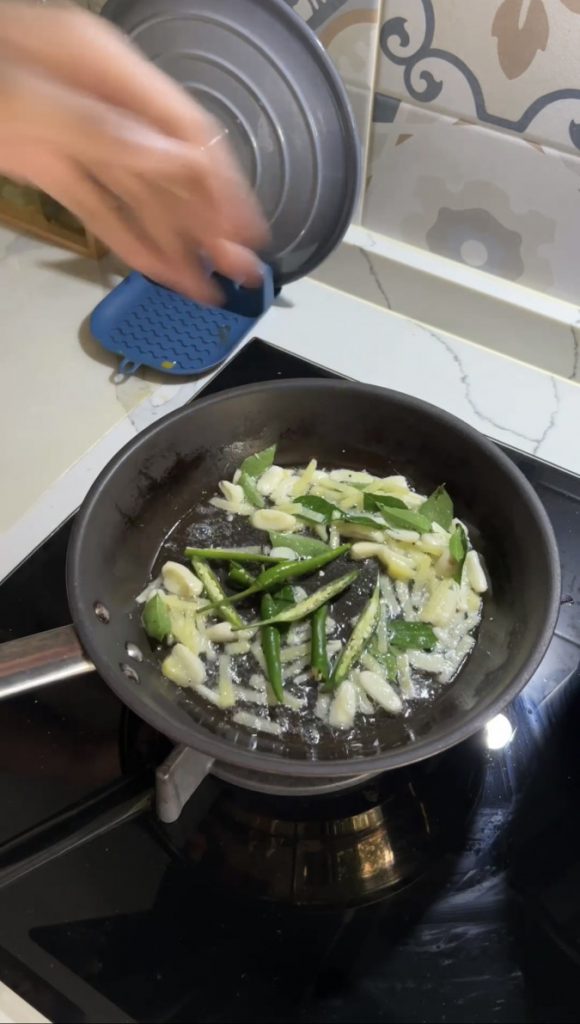
Fish Curry with your very own ground masala, and finish off with tempered spices. There’s nothing quite like it! Here’s how to get started.
Jump to RecipeFish curry is one of those dishes that’s as unique as the maker – everyone has a version of their own! I myself have several versions of this classic Indian curry, and here’s yet another one.
Looking for a traditional South Indian Fish Curry recipe? I’ve got you covered.
Here’s why you should make this curry:
- It’s rich and creamy, without even a drop of cream
- You’ll be using your very own, homemade curry paste
- You can use any white fish you have access to
- The flavours are explosive – you (or your guests) will want more and more
- It’s finished off with a traditional tadka, or tempered spices
Making your own curry paste

Before you scroll past quickly, let me tell you that this sounds a lot more difficult than it actually is. Cooking a curry with a curry paste you made makes it specifically yours. How so? It means you can adjust the spice level, and add more onions, chillies or tomatoes as you wish and see fit.
Do you like it hot? Then add chilli padi. Do you want to try a green version? Then add green chillies instead. Do you like the heady aroma of dry spices? Then add them!
This step is essential, as it gives you the ‘creamy without cream’ element.
Note: Do not blend hot ingredients in a closed blender, it will explode. If you’re blending the ingredients hot, make sure there’s a hole in your blender lid for the hot steam to escape. Otherwise, let the ingredients cool before blending.
A Tadka

A Tadka, or taalippu in Tamil, is a traditional Indian method of cooking that helps bring out the natural aromatics of whole spices. It’s super simple, you’ll just have to wear your splatter-resistant apron.
Essentially, you’ll have to:
- Pour your choice of fat into a pan, be it ghee or coconut oil
- Add your tempering whole spices, such as mustard seeds cinnamon etc.
- Add sliced onions, or ginger and garlic (depending on the recipe)
- Pour this hot, sizzling mixture over your curry
Why do we tadka?
Tempering, or exposing dried whole spices to hot oil, helps the flavours trapped in the spices to release due to the shock of the heat. When you pour this heated-up, flavour-released spice mix into your curry, you infuse these precious, rich flavours into the curry as a spicy whisper.
I can’t tell you with words how a tadka can lift a curry up, flavour-wise. Usually, this method of tempering spices is used for dal curries. However, adding to a fish curry, particularly this one, just brings everything to life.
Let’s get down to the thick of it:
Fish Curry with tadka
Course: MainCuisine: IndianDifficulty: Moderate4
servings15
minutes40
minutesNot all fish curries are made the same. Here’s one that is creamy without the use of cream, and can be made quick and easy.
You’ll need;
- For the curry paste, you’ll need:
2 tbsp coconut oil
200g shallots, peeled and cored (see notes)
7 large red chillies, stemmed and chopped
1 large tomato, cored and chopped
- For the fish:
450g fish fillets (see notes)
2 tbsp olive oil
1 tsp turmeric powder
1 tbsp ginger garlic paste (see notes)
- For the curry:
2 tbsp coconut oil
1 tsp mustard seeds
1 tsp cumin seeds
¼ tsp fenugreek seeds
200g shallots, peeled and chopped
1 sprig curry leaves
1 tbsp ginger garlic paste
1½ tbsp chilli powder
1 tbsp coriander powder
½ tbsp cumin seed powder
½ tbsp garam masala
1 tsp turmeric powder
Salt to taste
400ml water
- For the Tadka
2 tbsp coconut oil
1 tsp mustard seeds
30 – 50g ginger, peeled and chopped
20 cloves garlic, peeled and chopped
1 sprig curry leaves
4 tiny green chillies
You’ll need to;
- Start with the fish:
- Preheat the oven to 200°C, line a baking tray with foil. In a large bowl, combine the fish fillets with olive oil, turmeric and ginger garlic paste. Mix everything together, then lay it out on the prepared baking tray. Place in the middle rack of your oven and bake for 20 mins.
- While that’s baking, work on the curry paste. In a heavy-bottomed pot over medium heat, add the oil and let it warm up. Depending on how heavy-bottomed your pan is, this will take a while.
- Then, add the shallots and red chillies, and let them roast in the hot oil for about 5 to 7 minutes. Stir things around, don’t leave the pan unattended. Add the wedged tomatoes, and cook till they soften (about 2 minutes). Transfer this mixture to a blender jug, and blend into a smooth paste after cooling for 10 minutes (see notes – very important!). You will not have to add water. Set aside.
- The fish should be ready at this point, remove from the oven and set aside. Get started on the curry.
- In the same heavy-bottomed pan you used earlier, add the coconut oil, followed by the mustard, cumin and fenugreek seeds, over low-medium heat. Once the mustard seeds start popping, add the shallots and saute till translucent. To this, add the curry leaves, followed by the ginger-garlic paste. Cook for a further 3 minutes.
- Then, add the onion-tomato paste that you had set aside earlier. Stir this through the ingredients in the pan, then add the chilli, cumin, coriander, garam masala and turmeric powders. Flavour with salt, then add the water (see notes). Stir everything together and bring to the boil.
- When the thick liquid is at a simmer, add the fish fillets. Stir gently at this stage, you don’t want to break up the fish pieces. Let the liquid seep into the fish.
- After about 2 minutes, you can switch off the heat. Then get started with the tadka.
- Add the coconut oil to a clean pan over medium heat. Then add the mustard seeds. Once the seeds pop, add the ginger and garlic and cook for 3 to 5 minutes, till the yellow flesh turns golden. Add the curry leaves and green chillies, then continue to cook for a further 3 mins. Then, pour the tempered ingredients over the curry, and stir through lightly.
- Garnish with coriander, and serve impressively over warm rice.
Notes
- Not a fan of shallots? You can sub them with peeled and chopped large onions.
- Do not blend hot ingredients in a closed blender, it will explode. If you’re blending the ingredients hot, make sure there’s a hole in your blender lid for the hot steam to escape.
- If the water is too little for your liking and you find the curry still too thick, you can always make it runnier with more water. Just ensure that you salt it accordingly.
- Fish fillets – I used frozen Nile Perch pre-cuts. Please feel free to use other fish of your choice.
- Ginger garlic paste – this is commonplace in most Asian households. Essentially, it’s blended ginger and garlic, in equal portions. You can get this fresh from the Indian stores in the wet market, or from NTUC (sometimes). You can also make your own by blending equal amounts of peeled ginger and garlic with a little bit of water to form a paste. Store at the back of the fridge for up to 2 weeks.
